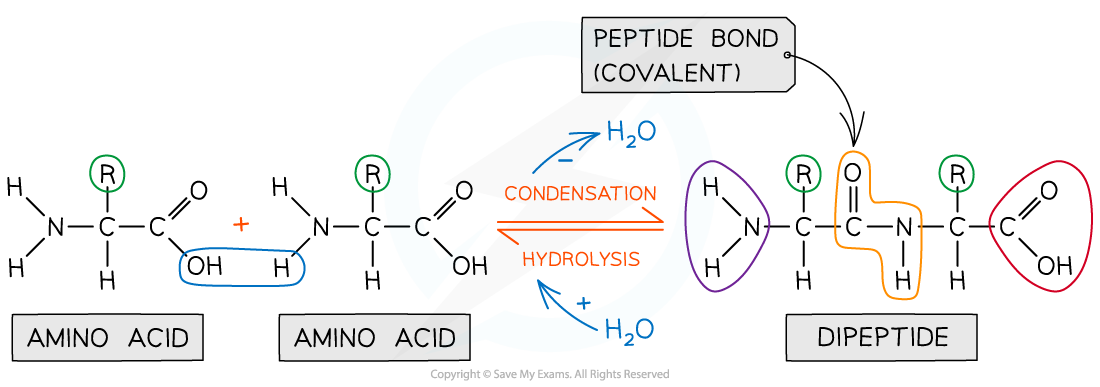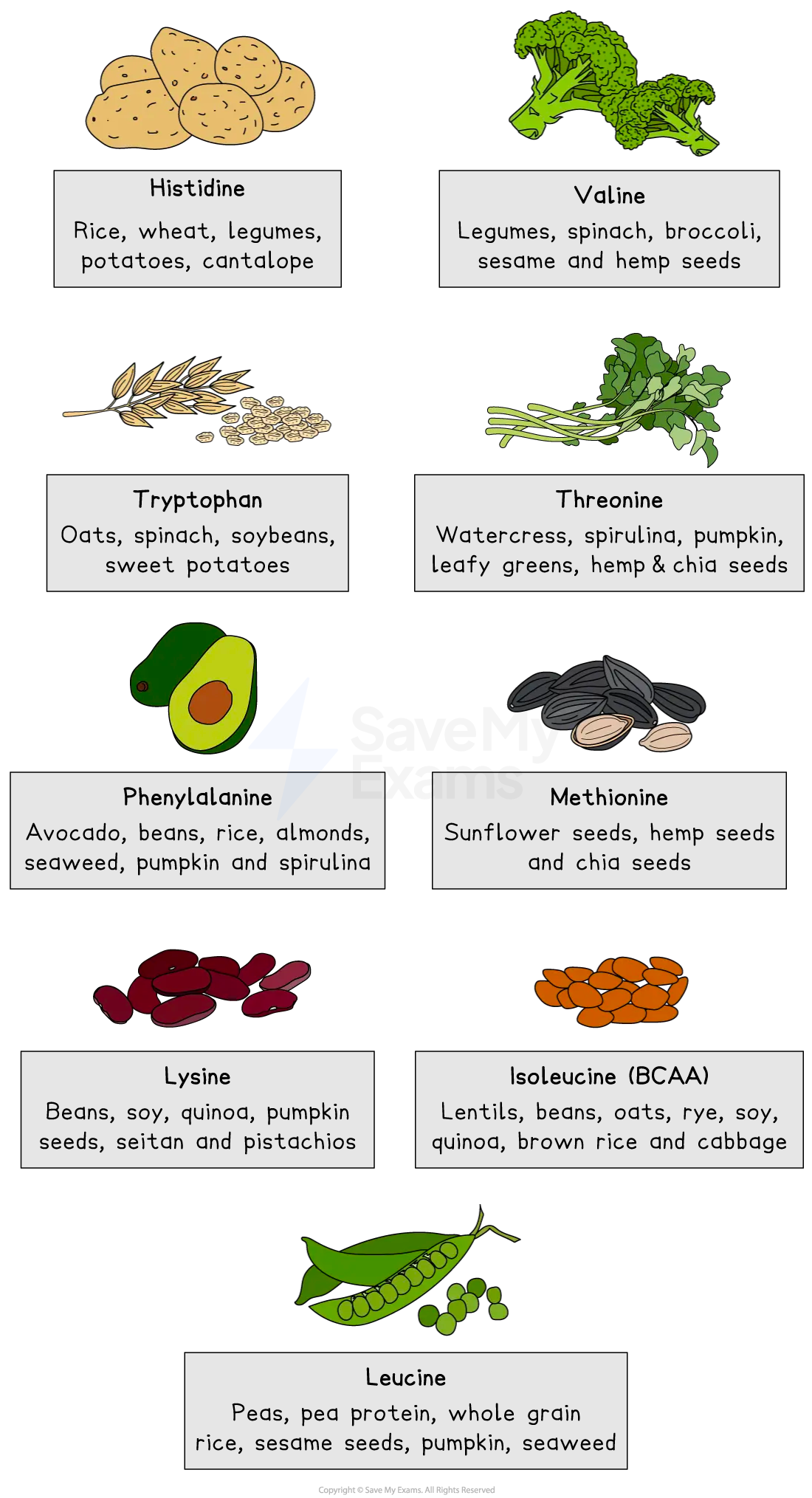Formation of Proteins (DP IB Biology): Revision Note
Amino Acid Structure
Proteins
Proteins are polymers (and macromolecules) made of monomers called amino acids
The sequence, type and number of the amino acids within a protein determines its shape and therefore its function
Proteins are extremely important in cells because they form all of the following:
Enzymes
Cell membrane proteins (e.g. carrier)
Hormones
Immunoproteins (e.g. immunoglobulins)
Transport proteins (e.g. haemoglobin)
Structural proteins (e.g. keratin, collagen)
Contractile proteins (e.g. myosin)
Because all genes code for proteins, all of the reactions necessary for life are dependent on the function of proteins
Amino acids
Amino acids are the monomers of polypeptides
There are 20 amino acids found in polypeptides common to all living organisms
The general structure of all amino acids is a central carbon atom, the alpha carbon, bonded to:
An amine/amino group -NH2
A carboxylic acid/carboxyl group -COOH
A hydrogen atom
An R group (which is how each amino acid differs and why amino acid properties differ e.g. whether they are acidic or basic or whether they are polar or non-polar)
The R group can be as simple as another hydrogen atom (glycine), right through to complex aromatic ring structures (e.g. phenylalanine)
Structure of an amino acid diagram

The generalised structure of an amino acid
The Peptide Bond
Peptide bond
In order to form a peptide bond, a hydroxyl group (-OH) is lost from the carboxylic group (-COOH) of one amino acid and a hydrogen atom is lost from the amine group (-NH2) of another amino acid
The remaining carbon atom (with the double-bonded oxygen) from the first amino acid bonds to the nitrogen atom of the second amino acid
This is a condensation reaction so water is released
Dipeptides are formed by the condensation of two amino acids
The word equation for this reaction is amino acid + amino acid → dipeptide
Polypeptides are formed by the condensation of many (3 or more) amino acids
A protein may have only one polypeptide chain or it may have multiple chains interacting with each other
During hydrolysis reactions, the addition of water breaks the peptide bonds resulting in polypeptides being broken down into amino acids
Molecular modelling kits can be used to build physical models that demonstrate peptide bond formation between different types of amino acids
Peptide bond diagram

Amino acids are bonded together by covalent peptide bonds to form a dipeptide in a condensation reaction
Drawing a peptide bond diagram

These steps can be followed to draw a peptide bond and a generalised dipeptide
Examiner Tips and Tricks
You will be expected to recognise whether an unfamiliar molecule is an amino acid or polypeptide so look for the functional groups (amine and carboxyl). When asked to identify the location of the peptide bond, look for where nitrogen is bonded to a carbon that has a double bond with an oxygen atom, note the R group is not involved in the formation of a peptide bond.
Amino Acids: Dietary Requirements
There are 20 naturally occurring amino acids
Our cells can synthesise 11 of these from other amino acids
These are termed non-essential amino acids
The remaining nine we need to consume via our diets
These are called essential amino acids
A healthy, varied, well balanced diet will contain all the nine essential amino acids required
Diets that restrict certain foods may require supplementation
Meat contains all nine essential amino acids so a vegetarian or vegan diet needs to be well balanced and varied to ensure all essential amino acids are consumed regularly
Essential amino acid sources diagram

Plant based (vegan) sources of the nine essential amino acids
Examiner Tips and Tricks
You are not required to remember or give examples of non-essential and essential amino acids.

Unlock more, it's free!
Did this page help you?